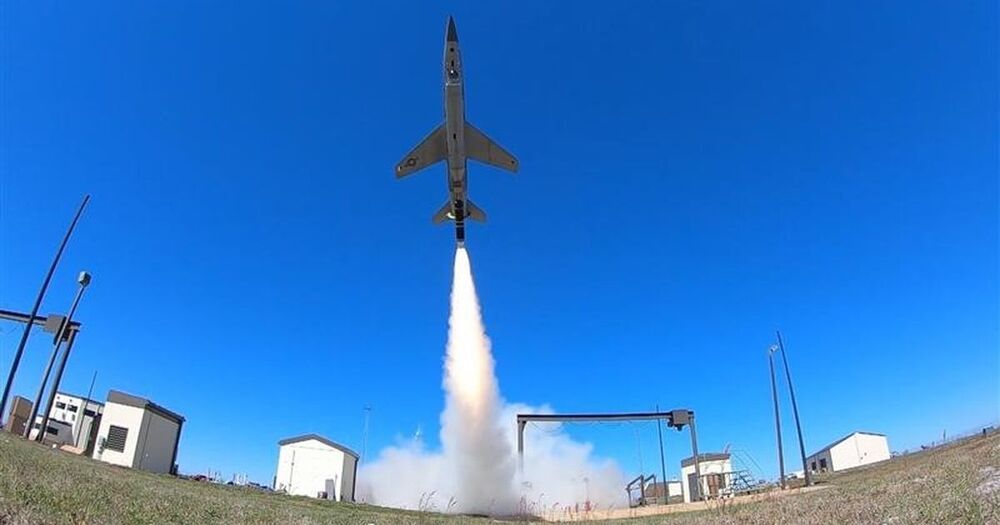Starship has an explosive flight record, but SpaceX may finally be mastering the spaceship’s landing. That’s crucial to making it reusable.
Get the latest international news and world events from around the world.
Uniting the mysterious worlds of quantum physics and music
Physics has long looked to harmony to explain the beauty of the Universe. But what if dissonance yields better insights?
Quantum physics is weird and counterintuitive. For this reason, the word ‘quantum’ has become shorthand for anything powerful or mystical, whether or not it has anything whatsoever to do with quantum mechanics. As a quantum physicist, I’ve developed a reflexive eyeroll upon hearing the word applied to anything outside of physics. It’s used to describe homeopathy, dishwasher detergents and deodorant.
If I hadn’t first heard of Quantum Music from a well-respected physicist, I would have scoffed the same way I did at the other ridiculous uses of the word. But coming from Klaus Mølmer it was intriguing. In the Quantum Music project, physicists and musicians worked together to unite ‘the mysterious worlds of quantum physics and music for the first time’. They developed a device that attaches to each key of a piano so that, when the pianist plays, the information is piped to a computer and synthesiser, which plays ‘quantum’ tones in addition to the familiar reverberations in the piano.
Among the tones used are those that represent a very quantum object: a Bose-Einstein condensate (BEC). This is a cloud of atoms that have been cooled down to just above absolute zero. At this low temperature, the microscopic quantum properties of the individual particles can all be treated collectively as a single, macroscopic quantum entity. Studying BECs is a way of examining the consequences of quantum mechanics on a larger scale than is typically possible.



New device can measure glucose in sweat with the touch of a fingertip
Many people with diabetes endure multiple, painful finger pricks each day to measure their blood glucose. Now, researchers reporting in ACS Sensors have developed a device that can measure glucose in sweat with the touch of a fingertip, and then a personalized algorithm provides an accurate estimate of blood glucose levels.
According to the American Diabetes Association, more than 34 million children and adults in the U.S. have diabetes. Although self-monitoring of blood glucose is a critical part of diabetes management, the pain and inconvenience caused by finger-stick blood sampling can keep people from testing as often as they should.
The researchers made a touch-based sweat glucose sensor with a polyvinyl alcohol hydrogel on top of an electrochemical sensor, which was screen-printed onto a flexible plastic strip. When a volunteer placed their fingertip on the sensor surface for 1 minute, the hydrogel absorbed tiny amounts of sweat. Inside the sensor, glucose in the sweat underwent an enzymatic reaction that resulted in a small electrical current that was detected by a hand-held device.

Dr. Anil Achyuta — TDK Ventures — Founding Member — Deep-Tech Healthcare And Energy Investments
Deep-tech healthcare & energy investments for a sustainable future — dr. anil achyuta, investment director / founding member, TDK ventures.
Dr. Anil Achyuta is an Investment Director and a Founding Member at TDK Ventures, which is a deep-tech corporate venture fund of TDK Corporation, the Japanese multinational electronics company that manufactures electronic materials, electronic components, and recording and data-storage media.
Anil is passionate about energy and healthcare sectors as he believes these are the most impactful areas to building a sustainable future – a mission directly in line with TDK Ventures’ goal.
At TDK Ventures, Anil has reviewed over 1050 start-ups and invested in: 1) Autoflight — an electric vertical take-off and landing company, 2) Genetesis — a magnetic imaging-based cardiac diagnostics company, 3) Origin — 3D printing mass manufacturing company, 4) Exo — hand-held 3D ultrasound imaging company, 5) GenCell — ammonia-to-energy hydrogen fuel cell company, 6) Mojo Vision – augmented reality contact lens company, and 7) Battery Resourcers – a direct to cathode lithium ion battery recycling company.
From his seven investments, Anil has secured two exits. GenCell IPO’d on Tel Aviv’s Stock Exchange, and Origin was acquired by the #1 3D Printing company in the world, Stratasys, for $100M.

Partners of People With Schizophrenia and Bipolar Disorder Have Often a Mental Disorder
Summary: Almost fifty percent of people who have children with partners suffering from schizophrenia or bipolar disorder also have mental health challenges, a new study reports.
Source: Aarhus University.
Almost half of the parents who have children together with a parent with schizophrenia or bipolar disorder, are themselves burdened by psychological issues. This can affect family life and the children. This is shown in the research result from the major Danish psychiatry project iPSYCH.

Coal is losing the price war to wind and solar faster than anticipated
Coal is a highly polluting and expensive way to generate electricity. This analysis shows that we have economic alternatives to continuing to burn coal for power in the US. Furthermore, analyses such as “The 2035 Report” show that we can fully retire coal, stop building other fossil fuel plants (namely gas), and still reliably meet electricity demand, while providing a host of environmental and societal benefits. There are existing policies that can help policymakers closely examine the cost burden of generation resources used today, procure cheaper and cleaner generation resources going forward, and address current assets on the books. The continuation and intensification of the coal cost crossover demands attention from policymakers and consumers alike.
The costs of most existing US coal-fired power plants are now more expensive than the total costs of wind and solar.

Alternative to Conventional Fertilizers: Fungi Could Manipulate Bacteria to Enrich Soil With Nutrients
Researchers have discovered a group of soil bacteria that could yield alternatives to conventional fertilizers for enriching soil and improving crop yields.
A team of researchers from the Boyce Thompson Institute (BTI) has discovered a distinct group of bacteria that may help fungi and plants acquire soil nutrients. The findings could point the way to cost-effective and eco-friendly methods of enriching soil and improving crop yields, reducing farmers’ reliance on conventional fertilizers.
Researchers know that arbuscular mycorrhizal (AM) fungi establish symbiotic relationships with the roots of 70% of all land plants. In this relationship, plants trade fatty acids for the fungi’s nitrogen and phosphorus. However, AM fungi lack the enzymes needed to free nitrogen and phosphorus from complex organic molecules.